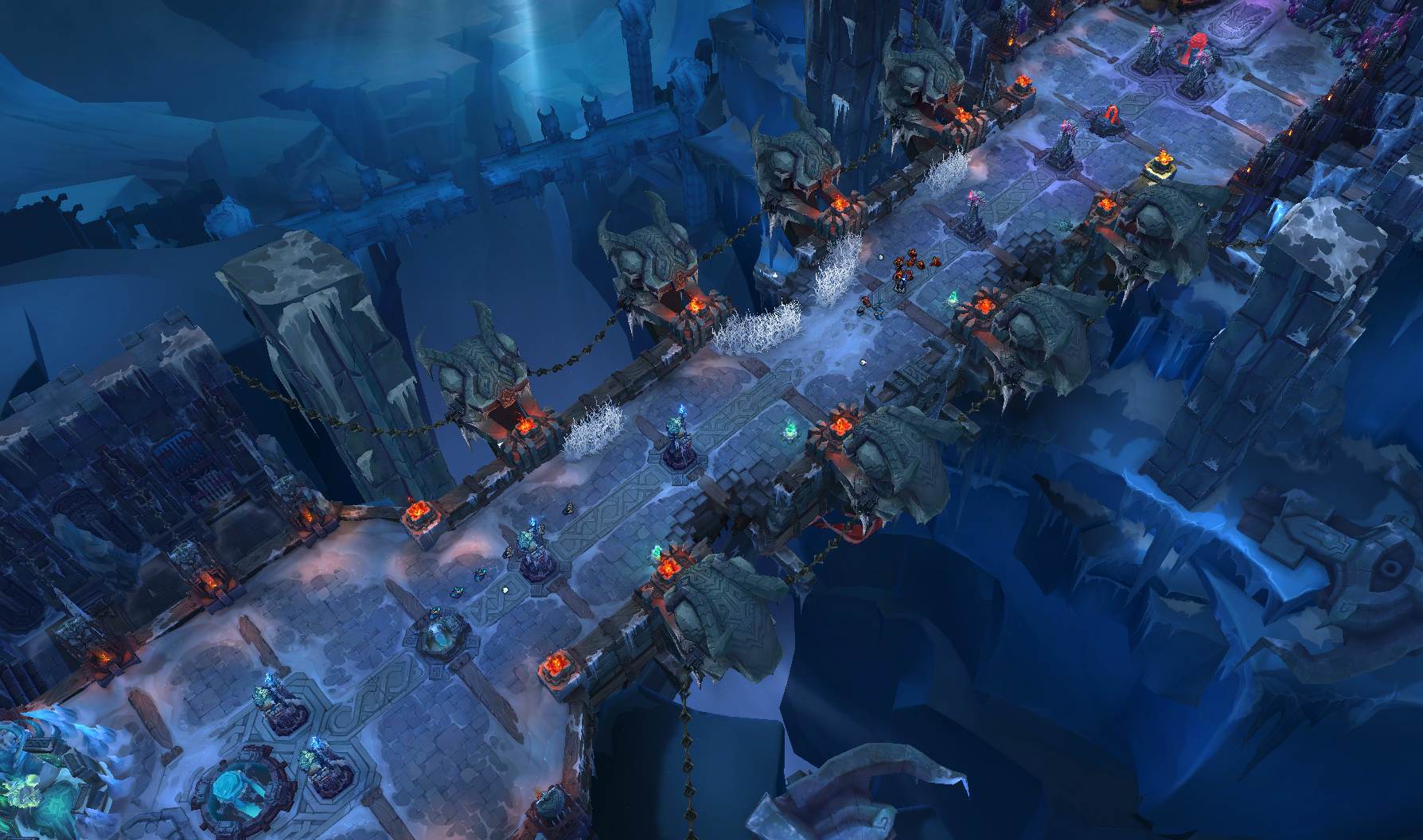I deployed this project on pythonwhere.com, you can check it here!
The code for this project can be found here.
Background and Motivation
Within the popular game League of Legends, there is a game mode called ARAM (All Random All Middle). There are two teams with 5 players each, where all the players are given a randomly character from a set of 145 (as of patch 9.20) champions. The team spawning at the bottom nexus is often referred to as the “blue” team and the team at the top nexus is referred as the “red” team. The setting of the map takes place in bridge where all the players duke it out all at once.

Lately I haven’t been playing the regular summoner’s rift match in League of Legends, rather opting for the ARAM map since it’s faster and doesn’t involve that much time investment. Personally I find it much more fun when you’re constantly in team battles compared to the more methodic regular mode.
Since the characters are randomly chosen for each character, that got me thinking if you could predict which team would win given the team compositions of both teams. I played a decent of games so I had an idea on what teams I could win with and those I probably couldn’t. But I wanted to test my own intuition vs what a machine learning model would think.
Where to get the data
This was an opportunity for me to work with Riot’s (the company that developed the game) API. I utilized the Cassiopeia library in Python to expedite the data extraction process. I really recommend anyone interested in using the Riot API to use package, it makes the data extraction process so much more easy. I couldn’t find an easy way to extract all ARAM games, so I utilized a random search method to extract random games starting with a seed account (my account). The API crawler then scans through my games and goes on to the next random player within my games. I extracted about 100,000 ARAM games from patch 9.19 (the most recent patch) which took about 2 days.
Design
I thought about how I was going to design a data matrix, and how to account for 2 teams and the 145 champions. If we let a single row represent a single match, we can define 145 columns as the features, reresenting each of the 145 champions, then each of the champions in the blue team will be marked as “+1” and the champions will be marked as a “-1”, while all the other unpicked champions are left as “0”. The target can be a binary variable indicated whether the blue team won or loss.
For example we want to turn the following match into a sparse vector
For match $i$ the associated data vector is given by:
From the champion and match matrix $X_{i,j}$ we want to predict $Y_i$ which is 1 if the blue team won the match and 0 otherwise.
Algorithm
For this project, I implemented the logistic regression algorithm given that this was a classification problem. The for a particular match $i$, the relationship between the target and the features (the champion columns) is given by:
Since the target is whether the blue team will win, $p$ is the probability of the blue team winning. The coefficients associated with each champion ($\beta_j \text{for champion $j$}$) has a natural interpretation of a score on well they perform in ARAM games, and the sign has the interpretation on whether it adds to the blue’s teams chances or the red’s team chances.
For example if champion 1 is in the blue team it will contribute $+\beta_1$ to the log odds of $p$ since its adding to the chances of blue team winning, while if it’s on the red team it will contribute $-\beta_1$ to the log odds of $p$. So champions with a high positive $\beta$ coefficient are stronger in ARAM, champions with coefficients close to 0 are average within the ranking of champions, and champions with large negative coefficents perform very bad in ARAM games. Thus the strength of a team’s composition will be the sum of the 5 champion scores given by their coefficient we can rewrite the equation as:
If the sum in the right hand side is large and greater than zero, this means the blue has a higher probability of winning and vice versa.
Once we estimate the parameters $\beta’s $, it’s just a matter of algebra to find the probability of the blue side winning, $p_i$ (which is just (1 - probability of red team winning)
What about $\beta_0$? There is no champion indicator $X_i$ associated with it. Interestingly when I initially set the same set of champions vs themselves, I expected that the resulting probability should have 50%, because it’s essentially a mirror match and each team should have an equal probability of winning, but I got a probability greater than 50%. I was puzzled at first then I realized that that there is a bias parameter associated within the logistic regression that is turned on by default. $\beta_0$ is the bias towards the blue team winning. Since the game is not symmetrical in terms on player vision (blue team plays on bottom and red team plays on top), there is a natural (as in inherent in the game) tendency towards the blue team winning.
The coefficients for each champion seem to vary around -1 to 1, so I thought about converting the scores into a more natural scale, say from 0 to 100. So I used the logistic function:
where $\alpha$ is controls the steepness of the curve. This converts the range to $(0,1)$. Go check out the champion rankings on the site above.
Interstingly we see Teemo, Heimerdinger, and Nautilus on top and Sylas and Yuumi on the bottom of the tier list.